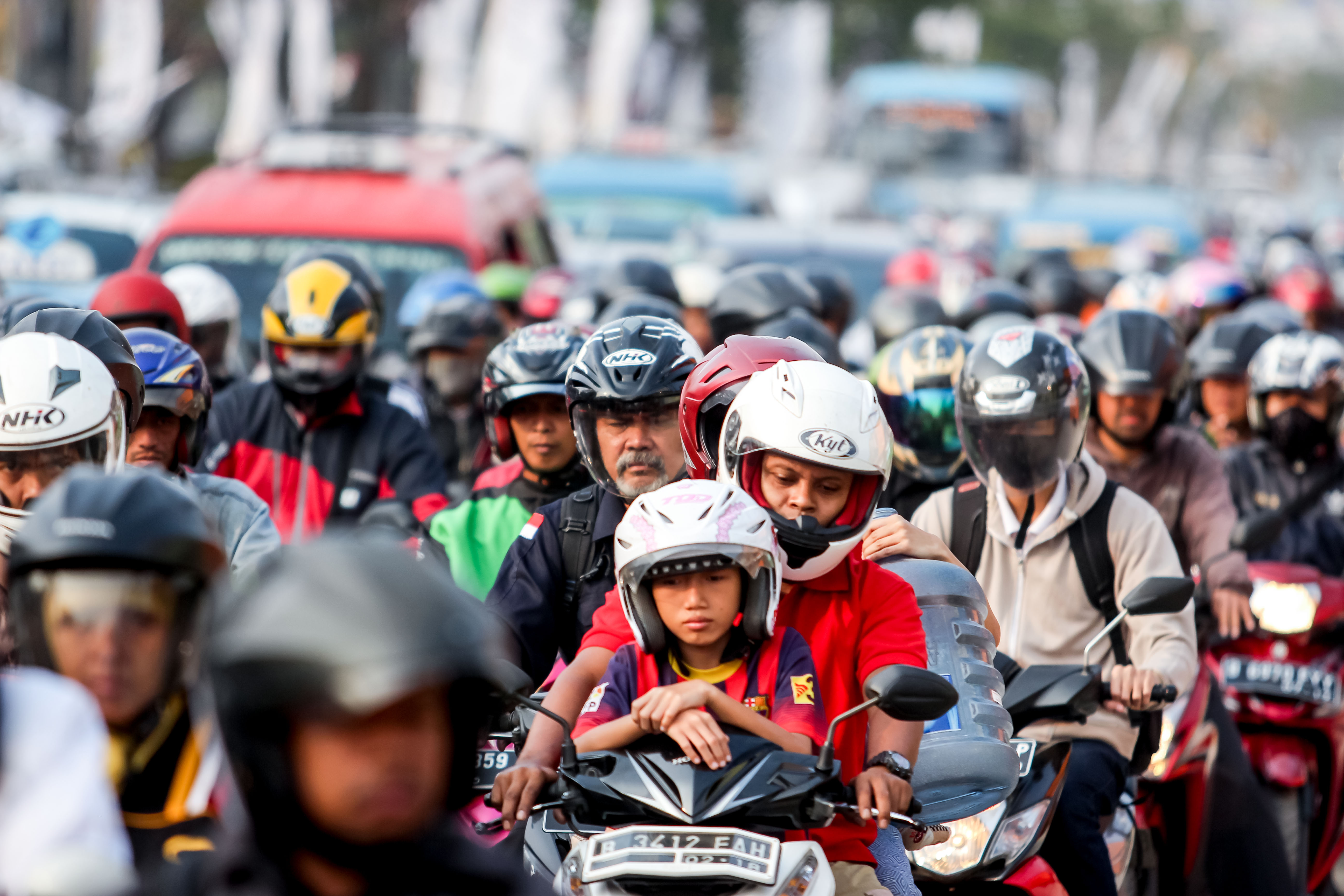Can Indonesia Rise to the Trump Tariff Challenge?
There are opportunities for Indonesia in the disruption caused by the new Trump tariff regime, writes Arianto A. Patunru. But it will require the kind of bold domestic reform carried out in response to previous economic emergencies.
7 April 2025

It is almost six months since President Prabowo Subianto took office. The economy grew slightly faster in the last quarter of 2024, compared to the previous quarter. The macroeconomic data for the first quarter of this year is not out yet, but we do not expect a significant increase in economic growth given that inflation has been below the Bank Indonesia target and both consumption and investment remain subdued. The global economy is not helping either; it might even drag the economy further down, especially after President Trump’s assault on world trade with exorbitant tariffs against US trading partners, including Indonesia.
It is important not to lay blame on external factors alone. After all, while Indonesia’s economic growth is still relatively good compared to other emerging and neighbouring countries, market sentiments have grown more negative recently. The Rupiah has dropped to its lowest level against the US dollar since the Asian Financial Crisis, making it one of the worst performing currencies. The stock market index has also been very volatile, especially after the government in February launched Danantara, a super holding company of state-owned enterprises and an agency for investment management, as potential investors question its governance structure.
The drop in market confidence reflects heightened uncertainty. Starting with a very tight budget, President Prabowo insisted on rolling out his expensive signature policy, the free nutritious meals program. Along with Danantara and other key programmes such as a national food estate, free health checks, and three million homes for low-income earners, this has significantly strained the budget. Unfortunately, the government missed its tax revenue targets in 2024, making fiscal management even more challenging. All these, plus the lack of credibility of Danantara, feed market scepticism.
Now all eyes are on Trump’s tariffs. According to the list released by the White House, Indonesia is being slapped with a 32% tariff rate, on top of the general 10% tariff applied to all countries, as a ‘reciprocal’ measure for Indonesia’s restrictions on US commerce (including, allegedly, trade barriers and currency manipulation) that, according to the White House, collectively amount to a 64% tariff equivalent. Despite the nonsensical nature of the formula, the Trump tariffs have caused panic among US trade partners. President Prabowo ordered his cabinet to take action in response to the tariff, such as simplifying business regulations and easing non-tariff barriers. The government also called other ASEAN countries to coordinate their response.
Are these reactions justified? There are three aspects to consider. First, Indonesian exports to the US account for around 9% of Indonesia’s total exports to the world. Compare this to the China market, where Indonesia sends 25% of its exports. However, because China is one of the main targets of US trade policy, Indonesia might have to deal with a second-order effect as well: the impact of China’s slowing exports to the US. These second-order effects could take the form of exports and investment being re-routed to Indonesia. But if China’s overall economy slows down, it might also reduce demand for Indonesian exports.
Second, there is some truth to the US list of trade barriers imposed by Indonesia. Many studies have pointed to the increase in protectionism in Indonesia and how protectionist policies like mineral export controls to drive downstream processing and local content requirements might backfire on the Indonesian economy. Regardless of what Trump demands from Indonesia, domestic reform in these areas has long been overdue. Removing restrictions on access by Indonesian firms to high-quality imported inputs and improving logistics and connectivity would significantly reduce trade barriers.
Third, this policy from Trump actually creates an opportunity for Indonesia. There will be a massive recalibration of trade and investment flows around the world following the Trump tariffs. Investors will not wait until governments reach an agreement, as they do not want their money to lay dormant. Countries with the best investment climate and most competitive labour forces can expect to be on the receiving end of the investment detour. In this regard, Prabowo’s call for simplifying regulations and easing a myriad of restrictions is a step in the right direction. Equally important is to facilitate business access to other markets (or at least, to not hinder it). Indonesia’s main exports to US include machinery and electrical equipment, garments and footwear. Arguably, the latter two could more easily switch to other countries. They are also more labour intensive, reflecting Indonesia’s comparative advantage. In other sectors, like machinery and electrical equipment, Indonesian firms will reap the benefits of trade if they engage in global production networks. It is thus important to strengthen ties with markets beyond the US.
Finally, it is important not to lose sight of the broader development goal, that is to accelerate growth to eradicate poverty. Dealing with the Trump tariffs is only a small part of this goal, that is, through improving trade policy. Other complementary policies are needed. Yet, what happens in the US might lead to higher inflation there and thus higher interest rates. This can trigger increased capital outflow from emerging countries like Indonesia. Unfortunately, policy instruments are limited: fiscal policy is significantly constrained, while monetary policy has its own limitations. Furthermore, Bank Indonesia’s involvement in the affordable housing program has invited questions about its independence. With these obstacles to trade, fiscal, and monetary policy, we are left with structural reform, which goes back to further deregulation, investment climate improvement and better governance. Indonesia experienced lacklustre growth following the collapse of the oil price in the mid 1980s. In response, the government rolled out a series of bold deregulation measures as part of a structural reform programme. It successfully reoriented the economy. Maybe it’s time to take a similar strategy.
Arianto A. Patunru is the policy engagement coordinator of ANU Indonesia Project, Canberra, and the chairman of Centre for Indonesia Policy Studies, Jakarta.
How can we help? Get in touch to discuss how we can help you engage with Asia
